Tiny Little Models: Big Answers to Human Health Challenges
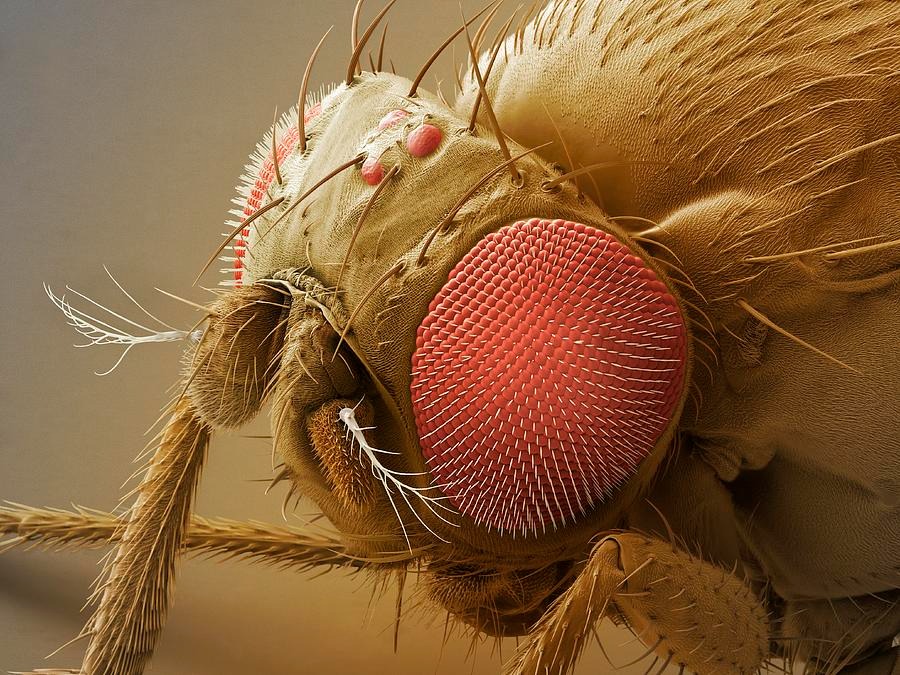
Forget fancy lab rats and expensive monkeys!! The next big thing in medical research could be… a fruit fly? Don’t underestimate these pint-sized creatures. It turns out that these tiny nuisances are our distant cousins, sharing about 75% of their genes with us! Isn’t it surprising? This surprising connection makes them superheroes in the world of medical research, helping us unlock the secrets of human diseases.
What makes these humble little bugs so special?
For decades, scientists have relied on various animals, like mice and monkeys, to understand human diseases. But this humble fruit fly hero, Drosophila melanogaster, from the genus of small American flies, Diptera, is a model organism that has revolutionized our understanding of genetics and disease. To study developmental genetics, the fruit fly has become the most commonly used invertebrate.
Here’s why these little flies are such big players in medical research:
1. Speedy Reproduction: Unlike waiting years for lab mice to grow, these flies mature in just 10 days! This rapid life cycle allows scientists to study multiple generations quickly, observing how genes are passed down and their impact on health.
An embryo emerges within 24 hours of egg fertilization. This embryo then goes through three different larval stages, eventually maturing into an adult Drosophila. From egg to adult, a fly’s life unfolds in a mere 10 days! This rapid development makes them ideal subjects for genetic studies, as researchers can observe multiple generations in a short timeframe. A single female fly can produce up to 1500 eggs in her lifetime, creating a continuous stream of new Drosophila for genetic research. (Simmons, 2000)
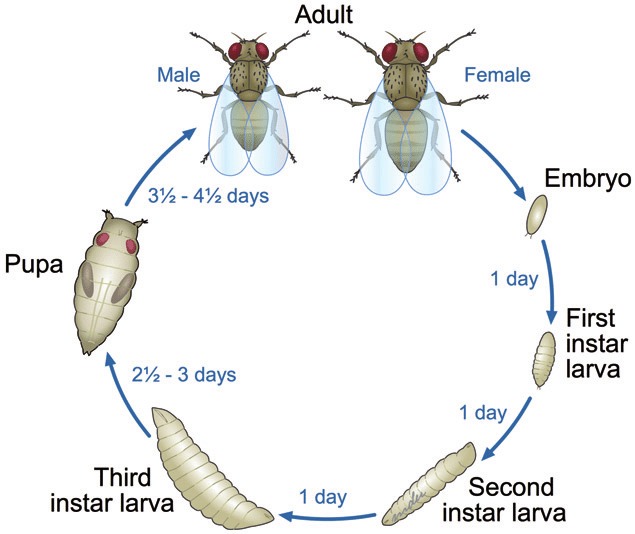
2. Easy Maintenance: Forget spacious cages and expensive diets. Fruit flies, being small creatures, thrive in small containers with minimal resources, making them perfect for labs with limited space and funding.
3. Genetically Open Book: With only four pairs of chromosomes compared to our 23, their genetic makeup is simpler and easier to navigate. Therefore, this facilitates genetic mapping and investigates genetic transmission easily. This “genetic transparency” makes it easier to identify and manipulate genes, allowing researchers to understand how they contribute to disease.

4. Shared Ancestry, Shared Secrets: Believe it or not, we share about 60% of our genes with fruit flies! This surprising kinship means they can be used to model human diseases like cancer and neurological disorders, giving us valuable insights into disease mechanisms and potential treatments. The Drosophila genome is 60% homologous to that of humans, less redundant, and about 75% of the genes responsible for human diseases have homologs in flies (Ugur et al., 2016).
5. Tiny Bodies, Big Clues: These files may be small, but they exhibit many complex behaviors like humans, including eating, mating, and even sleeping. This makes them ideal for studying how genes influence behavior and potential links to mental health disorders.
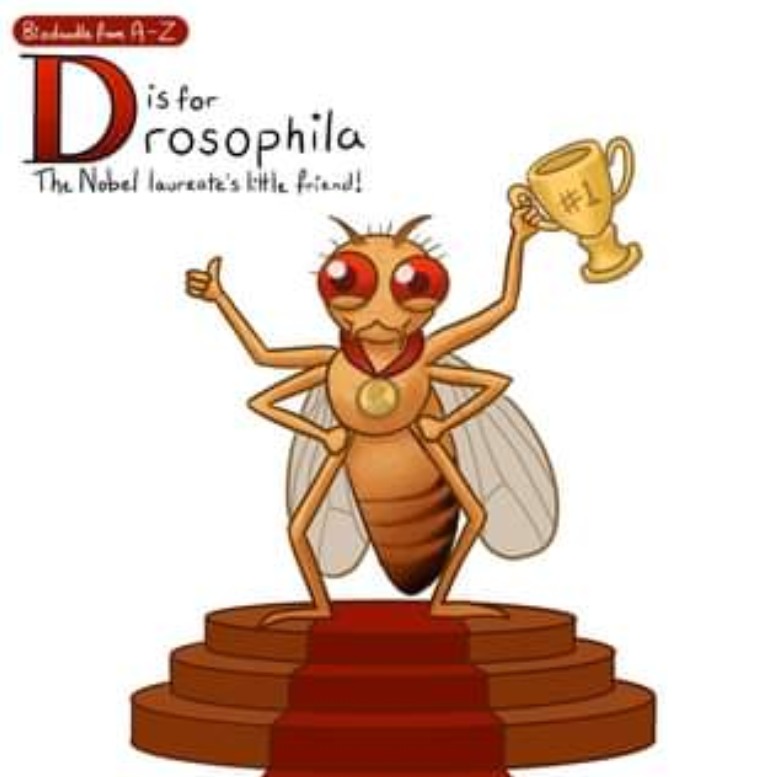
Fruit flies might seem insignificant compared to humans, but their role in understanding human health and disease is surprisingly significant.
Early on, fruit flies helped us understand the mechanisms by which traits are passed down through generations, paving the way for modern genetics. Flies have been important in unraveling “signal transduction,” the language cells use to communicate and respond to messages. We’ve even named human signaling pathways after their fly counterparts, like “Notch,” named for a wing mutation. Also Studying normal development in flies has significantly impacted our understanding of cancer, where cells lose control of division and identity. This connection has led to new cancer treatments targeting pathways first discovered in flies.
The list goes on and on! From understanding the mutagenic effects of X-rays to uncovering the cellular basis of immune responses and the genetics of behavior, fruit flies have served as invaluable model organisms for countless biological breakthroughs.
What have Morgan’s studies revealed?
Let’s travel back to January 1910, around a century ago. It was during this pivotal moment that Thomas Hunt Morgan made a remarkable discovery: his first Drosophila mutant, a male fly with striking white eyes. Little did he know that this time would bring experimental genetics with Drosophila.
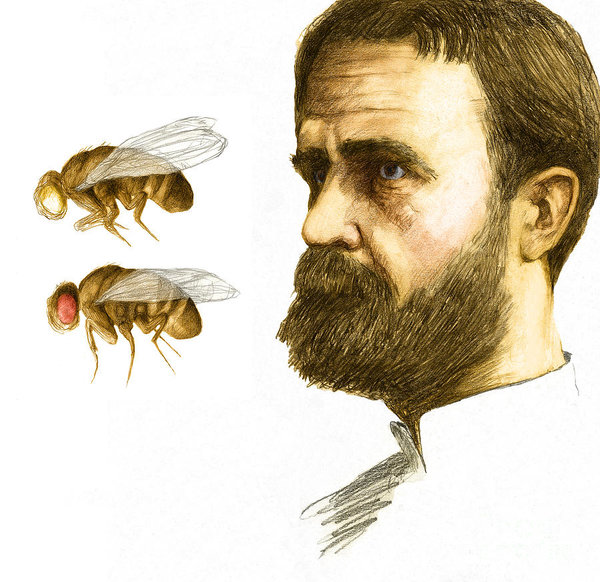
Morgan aptly named this mutated gene “white” and promptly unraveled its mystery, proving it sits comfortably on the X chromosome. This publication marked a milestone; it was the first time that a specific gene was mapped to a specific chromosome.
But wait, there’s more to this story! While many of us know about the wonderful discovery, what often goes unnoticed is that this gene has taken us on an incredible journey that has brought us into the deepest genetics.
In 1913, Morgan compiled a list of Drosophila mutations that gave rise to changes in eye color and wing shape. These findings revealed that five new mutations were associated with sex. One of these new mutations, eosin eye color, is always inherited with white eye disease; however, differentiation could be made through all other combinations of analyses.
This genome map not only provided us with a genetic arrangement but also withstood the experimental test by rediscovering important polytene chromosomes for subsequent use in cell analysis. This important event strengthened our understanding of gene regulation with chromosomes and laid the foundation for further research in genetics.
Fast forward a century of scientific research, and you find that “white” has been the unsung hero of countless experiments, opening up fundamental questions in heredity. From its humble beginnings, this gene has been a cornerstone in the study of Drosophila genetics, unlocking secrets that have shaped our understanding of the genetic code.

The Nobel study on embryo development
Nobel Prize-winning scientist Christian Nusslen-Volhard, renowned for his groundbreaking work in fruit fly genetics, is writing a book on the historical and social aspects of developmental biology at the Planck Institute for Developmental Biology in Germany.
In her book, Nusslen-Volhard explains how genes regulate the growth of organisms, as a simple example of how genes dictate parts of the body of fruit flies.
Through her writing, Nusslen-Volhard aims to make the fascinating world of evolutionary biology comprehensible to all, bringing illuminating insights into the way organisms evolve and transform.
Unveiling the next chapter: Cutting-edge Discoveries in human disease-based research

Let’s talk about how little creatures like fruit flies, especially Drosophila, help us understand big human health issues like neurological diseases. These tiny insects have become superstars in labs because they are good models for diseases like Alzheimer’s, Huntington’s, and Parkinson’s. Scientists also use it to test new treatments, which is great!
Did you know that just a few years ago, diseases like Alzheimer’s and Parkinson’s seemed hard to understand and treat? But thanks to some amazing developments in genetics and heredity, we start thinking all the time.
But that’s not all! Drosophila flies and baby flies help us learn about heart disease. Through new methods, scientists are getting a better understanding of how flies’ hearts work and how they grow. It’s like studying the development of flies, but specifically in their hearts!
And get this! Even fruit flies teach us about cancer! While very different from us, they share many of the same signaling pathways that can lead to cancer. Scientists can use it to better understand how tumors grow and how the immune system works.
In addition, fruit flies are used to study the effects of junk food on our bodies. They are tested with a lot of sugar and other very unhealthy foods to see what happens. Understanding how obesity and type 2 diabetes develop in humans is a bit like an experiment.
So, the next time you see a buzzing fruit fly, remember—they’re not just pests; they’re helping us unlock some of the greatest mysteries of human health!
Understanding the Boundaries
Although Drosophila melanogaster is remarkable for genetic research, it has limitations. You see, these little insects have evolved for as long as we humans have, which means they are not very much like us. Thus, what we learn from their study may not be directly relevant to human disease.
Another thing to keep in mind is that fruit flies don’t have all the cellular structures or behaviors that we do. This can make it difficult to use to study complex human conditions. And, of course, we also have to consider ethics. Although the use of fruit flies in research is often considered less controversial than the use of other animals, it’s still something that should be considered
Despite these limitations, fruit flies still contribute significantly to the discovery of some basic genetic codes. And who knows? Lessons learned from their studies can still lead to advances in the treatment of human diseases. So, let’s give our little lab assistants in the wings a hand—they do a great job, even if they don’t look like us!
Written by:
Gumindu Chathuranga and Arunodya Wijerathna
3rd Year Undergraduates,
Immunology and Integrative Molecular Biology Hons.
Faculty of Science,
University of Colombo.
References:
- Baenas, N., & Wagner, A. E. (2022). Drosophila melanogaster as a Model Organism for Obesity and Type-2 Diabetes Mellitus by Applying High-Sugar and High-Fat Diets. Biomolecules, 12(2), 307. https://doi.org/10.3390/biom12020307
- Green, M. M. (2010). 2010: A Century of Drosophila Genetics Through the Prism of the white Gene. Genetics, 184(1), 3–7. https://doi.org/10.1534/genetics.109.1100154
- Mirzoyan, Z., Sollazzo, M., Allocca, M., Valenza, A., Grifoni, D., & Bellosta, P. (2019). Drosophila melanogaster: A Model Organism to Study Cancer. Frontiers in Genetics, 10. https://doi.org/10.3389/fgene.2019.00051
- Simmons, H. (2000). Drosophila as a Model Organism. News-Medical. Retrieved February 22, 2024, from https://www.news-medical.net/life-sciences/Drosophila-as-a-Model-Organism.aspx
- Vázquez, J. M. C. (2007). From genes to embryo and beyond. CBE- Life Sciences Education, 6(1), 27–28. https://doi.org/10.1187/cbe.06-12-0208
Image Courtesy:
- Title Image: https://biturl.top/YNR7Nz
- 1st Content Image: https://biturl.me/GLjdp
- 2nd Content Image: https://biturl.me/PwHcS
- 3rd Content Image: https://biturl.me/ukOFyeY
- 4th Content Image: https://biturl.me/VgJJG

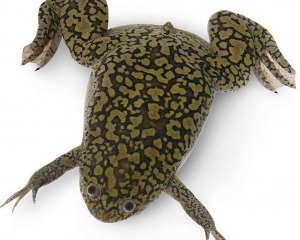
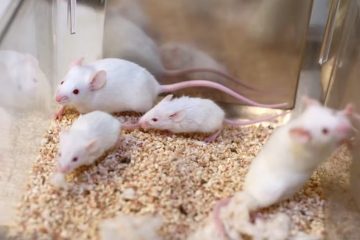
0 Comments